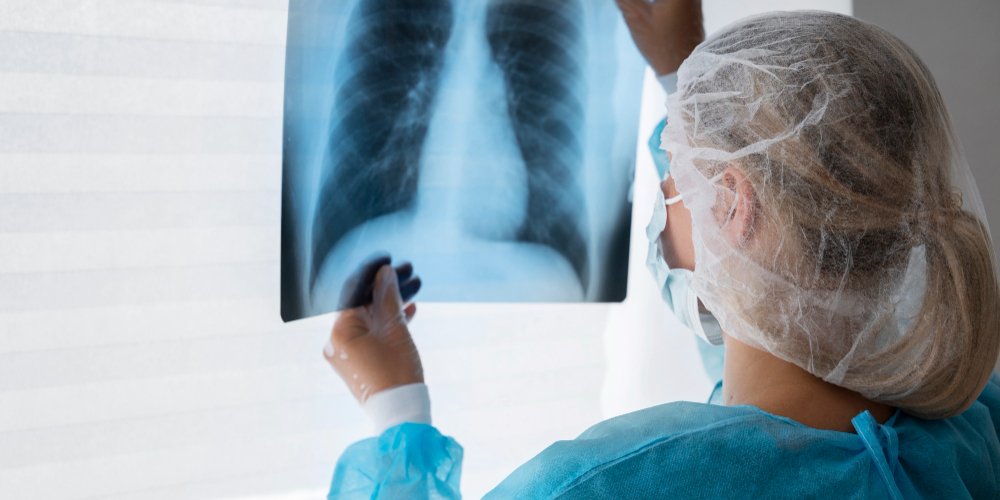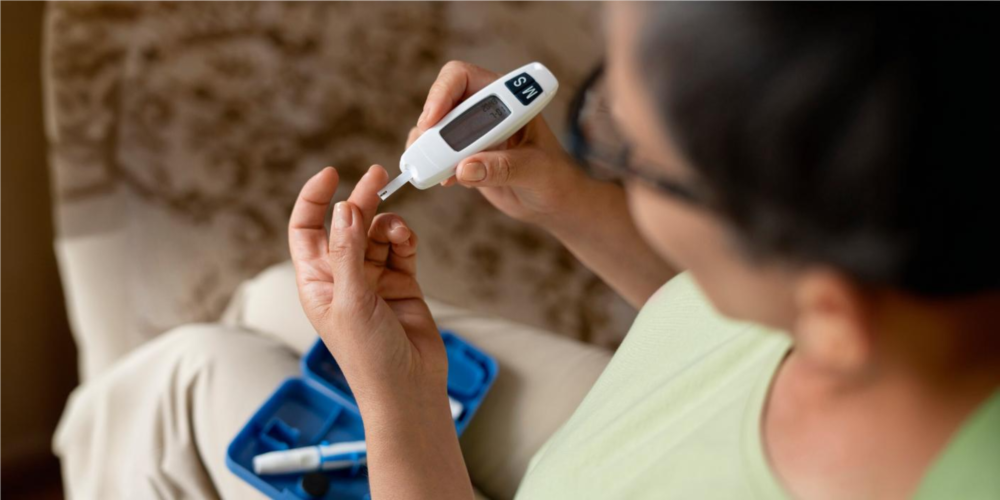What is PCOS? The hidden struggle of one in five Indian women | Explainer
PCOS is a complex hormonal condition affecting millions of women, particularly in India. While there's no cure, effective management through lifestyle changes, diet, exercise, and mental well-being can help lead a fulfilling life.
Author
Author
- admin / 3 months

- 0
- 9 min read

Author
Simran Mudgal was 21 when she first began noticing unsettling changes in her body. Her periods grew irregular and painfully delayed, fatigue made even simple tasks exhausting, and coarse facial hair appeared along her chin and jawline. “I felt like there was a lot of imbalance in my body,” she recalls. In 2023, doctors finally diagnosed her with Polycystic Ovary Syndrome (PCOS).
The diagnosis left her vulnerable, especially as she was already recovering from another illness. Her doctor advised lifestyle changes- regular sleep, a balanced diet, exercise, and care for her mental health. At first, hormonal imbalances and body image struggles were overwhelming, but with her parents’ support and a focus on nutritious food and workouts, Simran gradually found balance.
Now, at 23, she reflects on her journey with more clarity. “Sometimes you feel like eating a lot, sometimes not at all,” she says, acknowledging how PCOS continues to shape her relationship with her body. Earlier, slightly overweight, she turned to regular workouts to help regulate her weight and rebuild her confidence.
Simran’s journey is just one among millions of such experiences in India. In fact, studies suggest that 1 in 5 young Indian women suffer from this condition.
What is PCOS?
Polycystic Ovary Syndrome is a complicated hormonal condition that impacts reproductive, hormonal, and metabolic health. It affects people assigned female at birth(AFAB) during their reproductive years, most often beginning in adolescence. Doctors describe it as a syndrome rather than a single disease because it is diagnosed based on a combination of symptoms, not just one.
The Rotterdam criteria, which is widely used, requires at least two of three key features for a diagnosis: irregular or absent ovulation causing unpredictable or missed periods, high levels of male hormones known as androgens which may cause acne, excessive facial or body hair or thinning of scalp hair, and polycystic ovaries visible on an ultrasound scan.
The ovaries, which usually release eggs and produce female hormones such as estrogen and progesterone, function differently in people with PCOS. Instead of releasing eggs regularly, the ovaries may develop multiple small cysts, which are actually immature follicles. This disruption in ovulation causes irregular cycles and hormonal imbalances.
According to the World Health Organisation, up to 70 per cent of these women remain undiagnosed, which means millions continue to live with symptoms without ever receiving proper medical help.
A 2025 study comprised of a cross-sectional survey and a systematic review found “a high 17.40% prevalence rate of PCOS among college-going females aged 18–25 years in Delhi NCR, with 70.30% already diagnosed and 29.70% newly diagnosed during the study.” It also noted that, “sociodemographic factors such as age (20 years and above), higher education, ancestry (East India and immigrants), and nuclear family structure were associated with increased PCOS risk. Conversely, factors like belonging to the OBC category and lower middle class were linked to reduced risk.”
Another study reported, “A pilot cross-sectional study conducted in Tamil Nadu assessed young adolescent females and found a prevalence of 18 per cent for PCOS. They also concluded that the proportion of PCOS was higher in urban women in comparison to rural women. A similar study conducted in Mumbai, which was an urban community-based study, found that the prevalence of PCOS was 22.5 per cent by the Rotterdam criteria and 10.7 per cent by the Androgen Excess Society criteria.”
Are PCOS and PCOD the same?
While PCOS and PCOD are colloquially used interchangeably, they are distinct from each other. PCOD, or polycystic ovarian disease, is a term used to describe a condition where the ovaries develop multiple cysts due to hormonal imbalances and genetic tendencies.
In PCOD, the ovaries often release immature or only partially-mature eggs, which in turn can turn into cysts.
However, unlike PCOS, PCOD is not classified as a syndrome. Even though they have some common symptoms, PCOS is considered a more serious condition and is a disorder of the endocrine system.
“PCOD can often be managed just by making informed lifestyle changes, and may not even require further medical treatment at all. PCOS, however, is a disorder of the endocrine system – it has more threatening implications and its treatment almost always requires external hormone intake,” according to the UNICEF.
What are the causes of PCOS?
Health experts are still uncertain about the exact cause of PCOS, but they agree that high levels of androgens play a key role by disrupting the ovaries’ ability to produce hormones and release eggs normally.
Research suggests that a mix of genetic, hormonal, and biological factors contributes to this imbalance. A 2019 study indicated that PCOS often runs in families, though inheriting it is not guaranteed and multiple genes may be involved.
Insulin resistance is another major factor, with studies from 2023 estimating that between 65 and 95 per cent of people with PCOS experience it. When cells cannot use insulin effectively, the pancreas produces more, leading to hyperinsulinemia, which in turn stimulates the ovaries to produce more androgens. Obesity can worsen insulin resistance and raise the risk of developing type 2 diabetes.
In addition, women with PCOS often show higher levels of inflammation, which can also be aggravated by obesity and has been linked to excess androgen production, further fuelling the cycle of hormonal imbalance.
What are the symptoms of PCOS?
A cross-sectional study involving 9824 women found that “women aged 18 to 40 years, the weighted national prevalences of PCOS by the National Institutes of Health 1990 and Rotterdam 2003 criteria were 7.2% and 19.6%, respectively, and PCOS phenotype C was the most prevalent (40.8%). Among women with PCOS, 43.2% had obesity, 91.9% had dyslipidemia, 32.9% had nonalcoholic fatty liver disease, 24.9% had metabolic syndrome, 3.4% had diabetes, and 8.3% had hypertension.”
According to the World Health Organisation, the symptoms of polycystic ovary syndrome vary from person to person, may change over time, and often appear without a clear trigger. Common symptoms include irregular menstrual patterns such as heavy, prolonged, unpredictable, or absent periods, along with infertility, persistent acne or oily skin, excessive hair growth on the face or body, male-pattern baldness or thinning hair, and weight gain that is especially concentrated around the abdomen.

Beyond these reproductive and physical effects, PCOS is strongly associated with a higher risk of developing long-term health conditions such as type 2 diabetes, high blood pressure, elevated cholesterol, cardiovascular disease, and even endometrial cancer. The syndrome also has significant psychological consequences, contributing to anxiety, depression, and negative body image.
“PCOS can also cause anxiety, depression and a negative body image. Some symptoms such as infertility, obesity and unwanted hair growth, can lead to social stigma. This can affect other life areas such as family, relationships, work and involvement in the community,” WHO highlights.
Is there any cure?
According to the WHO, there is currently no cure for PCOS, but treatments are available that can help manage and improve symptoms. Women experiencing irregular periods, difficulties with conception, or issues such as excessive acne and unwanted hair growth are advised to seek medical guidance.
Management typically involves a combination of lifestyle changes, such as maintaining a healthy diet and exercising regularly, which can reduce weight and lower the risk of developing type 2 diabetes.
Doctors may also prescribe birth control pills to regulate the menstrual cycle and reduce androgen-related symptoms like acne and facial hair, while other medications can target specific concerns. For women facing infertility due to PCOS, treatment options range from lifestyle interventions and medicines that stimulate ovulation to surgical procedures, and in some cases, in-vitro fertilization, though this carries certain risks.
What should we do?
A 2019 study on the effect of a low-carbohydrate diet found that it could support weight loss, improve insulin resistance, and lower total as well as LDL cholesterol levels. The study further suggested that following such a diet consistently for more than four weeks might lead to hormonal improvements, including increased follicle-stimulating hormone levels, decreased testosterone, and higher levels of sex hormone-binding globulin, all of which may help address the hormonal imbalances associated with PCOS.
Dr Manju Gupta, Senior Consultant – Obstetrician & Gynaecologist, Motherhood Hospitals, Noida, with 20 years of experience, explains: “Awareness about PCOS has grown, especially among young girls, with plenty of information available online. However, PCOS is a syndrome—a combination of symptoms—and not everyone experiences all of them. Some may only have one or two, often overlapping, which is why many remain undiagnosed, particularly if their menstrual cycles are still regular.”
The prevalence of anxiety and depressive disorders among women with PCOS ranges from 28% to 39% for anxiety and 11% to 25% for depression. Meanwhile, a case-control study titled “Stress and Polycystic Ovarian Syndrome – A Case Control Study among Indian Women” examined stress hormone levels in 100 women with PCOS and 150 healthy controls. It found significantly higher cortisol (395.84 vs. 256.26) and DHEA levels (6.04 vs. 5.05) in PCOS patients (p = 0.001 and p = 0.01). The study suggests stress may silently contribute to the development and severity of PCOS, highlighting that stress management could ease symptoms and prevent complications.
For Simran too, PCOS was mentally challenging. The sudden facial hair growth made her feel something was not normal. While some women may not mind it, for her it felt uncomfortable and strange. Combined with weight imbalances, it triggered insecurity about her looks, making her image-conscious and leaving her with a constant ‘spotlight effect,’ as she described it.
Dr Gupta noted that the most common symptoms of PCOS include irregular or delayed cycles, acne, weight gain, and unwanted hair growth. She added that mental health challenges are also frequent, as many young women panic at the sight of acne or worry about fertility after reading unreliable material online, which further amplifies body image concerns and anxiety.
She advised, “It is important to remember that PCOS is a lifestyle-related condition. With proper diet and regular exercise, symptoms can be managed effectively. We advise minimising high-calorie foods, refined carbohydrates, and oily or fried items, while focusing on balanced nutrition. Equally important is 40–45 minutes of daily physical activity.”
“Since PCOS is a lifestyle disease, modifications must be sustained. If not, symptoms may recur, requiring patients to restart the process. But with consistent care, women can live healthy and fulfilling lives,” explained Dr Gupta, who has 20 years of experience.
Also Read: What’s in a name? What is PCOS, and why is it not the same as PCOD?










